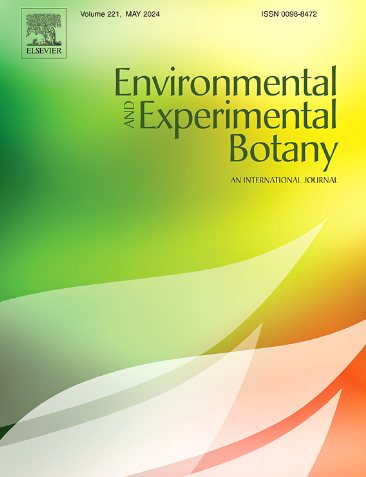Unraveling the impact of nano-microscale polyethylene and polypropylene plastics on Nicotiana tabacum: Physiological responses and molecular mechanisms
IF 4.7
2区 生物学
Q2 ENVIRONMENTAL SCIENCES
引用次数: 0
Abstract
Plastics, as emerging pollutants, are increasingly found in soil, yet their systemic impact on soil ecosystems and plants remains poorly understood. This study explores the impacts of Polypropylene (PP) and Polyethylene (PE) microplastics, of varying sizes (20 nm and 100 µm) and doses (100 and 1000 mg/kg), on tobacco plant growth. Over a 55-d exposure period, PP and PE MPs exhibited a dose-dependent effect on the growth of tobacco plants. Notably, both PE and PP exposures significantly suppressed plant height, as well as fresh and dry biomass, with PP demonstrating greater toxicity. However, an exception was observed in the PP treatment, with marginal yet notable increase in growth indicators was recorded at a 20 nm particle size under high-concentration exposure. Further investigations revealed that MPs exposure at varying concentrations negatively impacted photosynthetic activity and triggered oxidative stress in leaves, with higher-dose treatments leading to a more pronounced accumulation of reactive oxygen species (ROS). To elucidate the molecular response mechanisms of tobacco leaves under PP-MP stress, a co-omics analysis was conducted. The analysis identified key pathways involved in the plant’s response to PP-MP stress, including plant hormone signal transduction, the MAPK signaling, flavonoid and phenylpropanoid biosynthesis, and photosynthesis antenna proteins. A comprehensive assessment of genes and metabolites revealed significant alterations in the biosynthesis of several plant hormones and flavonoids, including auxin, cytokinin, abscisic acid (ABA), and jasmonic acid. These findings suggest that plastics may impair photosynthetic efficiency, alter hormonal responses, and cause redox imbalance, ultimately affecting plant growth and resilience.
揭示纳米级聚乙烯和聚丙烯塑料对烟草的影响:生理反应和分子机制
塑料作为一种新兴污染物,越来越多地出现在土壤中,但人们对其对土壤生态系统和植物的系统性影响知之甚少。本研究探讨了不同尺寸(20 nm和100 µm)和剂量(100和1000 mg/kg)的聚丙烯(PP)和聚乙烯(PE)微塑料对烟草植株生长的影响。在55 d的暴露期内,PP和PE MPs对烟草植株的生长表现出剂量依赖性。值得注意的是,PE和PP暴露都显著抑制了植物高度,以及新鲜和干生物量,其中PP表现出更大的毒性。然而,在PP处理中观察到一个例外,在高浓度暴露下,在20 nm的粒径下,记录了生长指标的边际显著增加。进一步的研究表明,不同浓度的MPs暴露会对光合活性产生负面影响,并引发叶片的氧化应激,高剂量的处理会导致活性氧(ROS)的积累更为明显。为了阐明烟草叶片在PP-MP胁迫下的分子响应机制,进行了共同组学分析。分析确定了植物响应PP-MP胁迫的关键途径,包括植物激素信号转导、MAPK信号转导、类黄酮和苯丙素生物合成以及光合作用天线蛋白。基因和代谢物的综合评估显示,几种植物激素和类黄酮的生物合成发生了重大变化,包括生长素、细胞分裂素、脱落酸(ABA)和茉莉酸。这些发现表明,塑料可能会损害光合效率,改变激素反应,并导致氧化还原失衡,最终影响植物的生长和恢复能力。
本文章由计算机程序翻译,如有差异,请以英文原文为准。
求助全文
约1分钟内获得全文
求助全文
来源期刊

Environmental and Experimental Botany
环境科学-环境科学
CiteScore
9.30
自引率
5.30%
发文量
342
审稿时长
26 days
期刊介绍:
Environmental and Experimental Botany (EEB) publishes research papers on the physical, chemical, biological, molecular mechanisms and processes involved in the responses of plants to their environment.
In addition to research papers, the journal includes review articles. Submission is in agreement with the Editors-in-Chief.
The Journal also publishes special issues which are built by invited guest editors and are related to the main themes of EEB.
The areas covered by the Journal include:
(1) Responses of plants to heavy metals and pollutants
(2) Plant/water interactions (salinity, drought, flooding)
(3) Responses of plants to radiations ranging from UV-B to infrared
(4) Plant/atmosphere relations (ozone, CO2 , temperature)
(5) Global change impacts on plant ecophysiology
(6) Biotic interactions involving environmental factors.
 求助内容:
求助内容: 应助结果提醒方式:
应助结果提醒方式:


